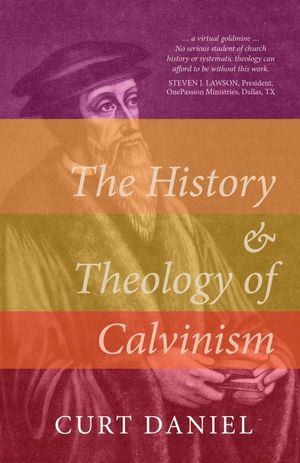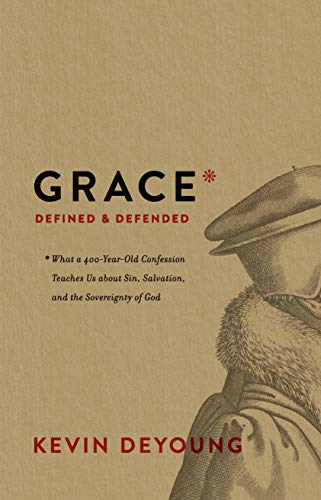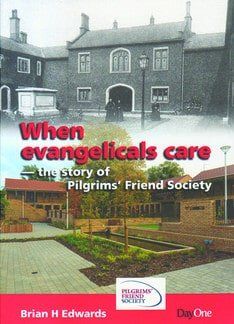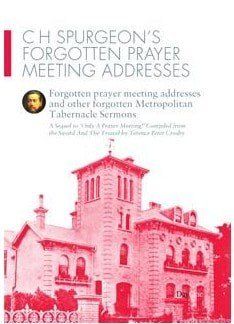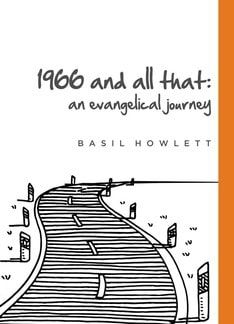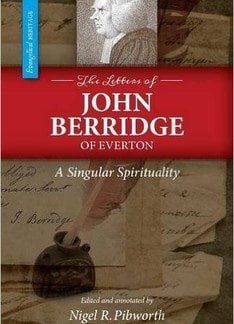William Grimshaw 1708-1763
‘The barren wilderness rejoiced and blossomed like the rose’. So wrote John Newton in a series of letters first published in 1799. He was not referring to the arid regions of the Sahara but rather to Yorkshire in the mid 18th century.
Newton was not describing an agricultural phenomenon but a spiritual awakening in a former religious wasteland where the Spirit of God was moving over the rugged peaks and bleak windswept moors.
There are decades when God is particularly at work and the 1730s and 1740s was such a period in Great Britain. George Whitefield had begun his gospel ministry to powerful effect in 1737 and the Wesley brothers had been brought to vibrant spiritual life in 1738. In the north of the country revival had begun under the preaching of the Oxford-educated Benjamin Ingham and the bluff stonemason John Nelson.
Over in the West Yorkshire village of Todmorden, a young clergyman, probably completely unaware of these developments, was struggling with a burdened conscience and a deep sense of sin. But it was to him that Newton later referred – as the instrument under God who was largely responsible for the flowering of the gospel that transformed the ‘rough mountains’ of Yorkshire and beyond. His name was William Grimshaw.
Grimshaw was born in September 1708 in the Ribble Valley in Lancashire. After a grammar school education in Blackburn he went up to Cambridge in 1726 and was ordained into the Church of England ministry in 1732.
This career was not chosen out of any desire to serve God but rather to permit him to indulge in easy living and country sports. But God had no intention of allowing him to waste his life in this manner. Grieving over the death of his young wife, who left him with two small children, he began a period of spiritual struggle.
Already his inability to give effective spiritual counsel to his parishioners had troubled him but the bereavement caused him to sink into depression and hopelessness. He later described this time as ‘the melancholy months of my soul’s sorrow for sin’.
But one day he took down a previously unread book from his shelves. It was Thomas Brooks’ volume Precious remedies against Satan’s devices. It intensified his sense of personal sin but was the beginning of a work of God in his soul.
Months of spiritual agony were to pass but in a friend’s house he came across John Owen’s Doctrine of justification by faith. Taking it home he studied it and discovered the liberating truth of the imputed righteousness of Christ.
As he later said, he could now ’embrace Christ only for my all in all’ and joy and relief filled his heart. There were further periods of struggle but he had become a new creation in Christ and the impact on his ministry was soon evident.
Haworth and beyond
Haworth in 1742 was a distinctly unhealthy place in which to live. Life expectancy was not much more than 25, and over 41% of children died before reaching the age of six. The people were ‘ignorant and brutish as the country was wild and savage’.
It was to this spiritually dark and needy village that Grimshaw came in 1742 at the age of 34. When he began his ministry he had only twelve communicants and the work was hard, but God honoured his faithful and vigorous preaching and by 1746 there were 120 converts. After a few years the twelve who had initially gathered at the Lord’s table had become 1200 and he regularly preached to several thousands.
By now what was happening in Haworth was becoming more widely known, and other preachers whom God was using in the revival came to see for themselves. The first of these was Benjamin Ingham in 1743 and a close friendship commenced that was to survive the stresses that sometimes marked those heady days.
Through Ingham, Grimshaw met Selina, Countess of Huntingdon, and her Ladyship always retained a very high regard for him. Later that year, John Nelson visited Haworth; and Grimshaw was much less welcoming towards the converted stonemason. But one way or another, he was becoming aware of the wider developments that were having such a gospel impact in the land.
Preaching twenty times a week
By 1744-5 his ministry included features that marked the Methodist movement. He was forming societies and using laymen to help him in the work. By the end of 1747 he had begun to preach regularly outside his parish boundaries.
In 1746 Charles Wesley visited him and another deep and lifelong relationship began. Some months after this, John Wesley came to Haworth and was so impressed with Grimshaw that he later nominated him as his successor to lead the Methodists.
In 1748 George Whitefield made the first of a number of visits and preached to 6000 hearers in the churchyard. Another deep and lasting relationship was formed between the two men and Whitefield took every possible opportunity to return. John Newton also loved to visit Yorkshire, and counted Grimshaw as one of his close friends.
The fruit of Grimshaw’s itinerant ministry led to the establishment in 1748 of the ‘Great Haworth Round’. This vast circuit – covering Yorkshire, Lancashire, Cheshire, Derbyshire, Nottinghamshire and parts of Lincolnshire – was his responsibility under Wesley’s overall control.
That William faithfully covered this huge area regularly, preaching and instructing the societies, will give some idea of the miles travelled and the prodigious labours of this indefatigable man of God. He would frequently preach 20-30 times a week during the course of these lengthy journeys.
Unafraid of the last enemy
Even though he was a man of considerable physical strength, such a demanding schedule inevitably began to take its toll. By 1759 he was beginning to make reference in his letters to stomach pains and debilitating headaches.
He refused to ease off, but his weakened disposition and his insistence on visiting the sick rendered him susceptible to infection, and he succumbed to an epidemic of typhus in Haworth in 1763.
His great friend Ingham visited him during his last days. Grimshaw said to him, ‘My last enemy is come! The signs of death are on me but I am not afraid – No! no! blessed be God, my hope is sure and I am in his hands’. On 7 April 1763 William Grimshaw entered the presence of the Saviour he had served so faithfully.
Haworth today
The little moorland village is one of the best known locations in Yorkshire. In many respects it has retained features that Grimshaw would recognise. The steep cobbled main street, leading up to the church where he preached so powerfully, is still there. Sadly however, the name which is prominent everywhere is not that of William Grimshaw but the much better known Bronte sisters.
All that remains of Grimshaw is his name in the list of incumbents on the church wall, a plaque indicating his burial place, and a teapot of his in the Museum. But his legacy is an enduring one which will survive long after the Brontes are forgotten, for it will last to the end of time.
Thousands of the redeemed will gather around the throne of the Lamb in glory and give thanks to God that they heard the life-transforming gospel from the lips of William Grimshaw.
And that glorious gospel is still being preached in Haworth today and sinners are still being saved. May it please God to attend it once again with the divine power that swept many precious souls into the kingdom in the 18th century.
John Harris

